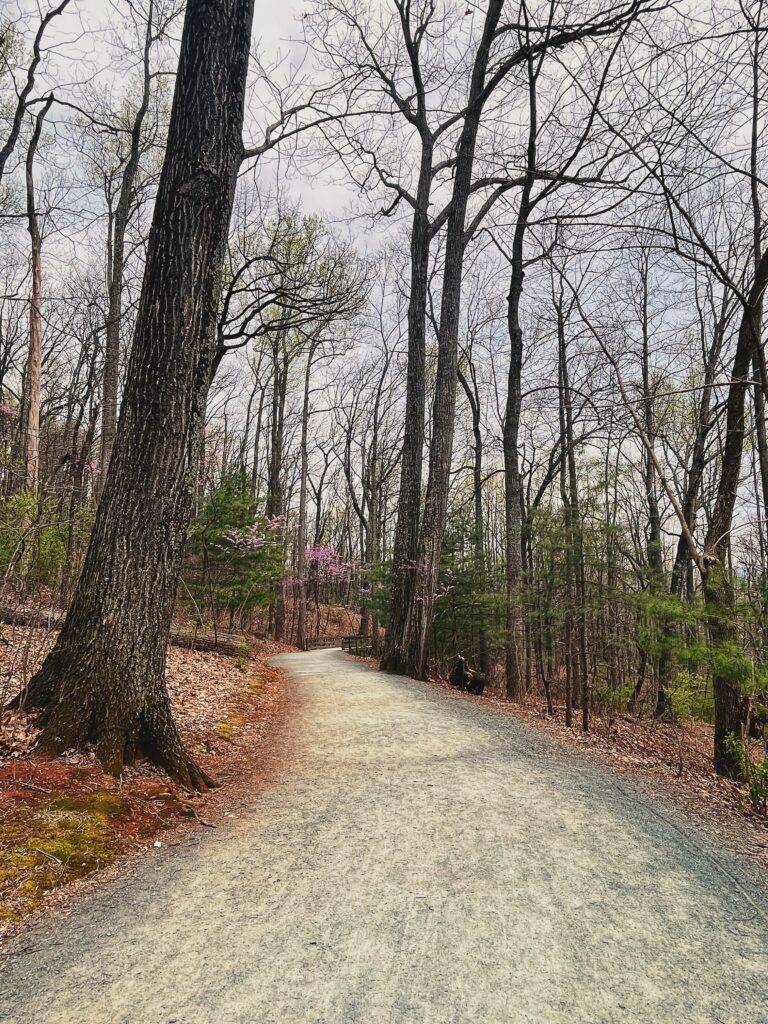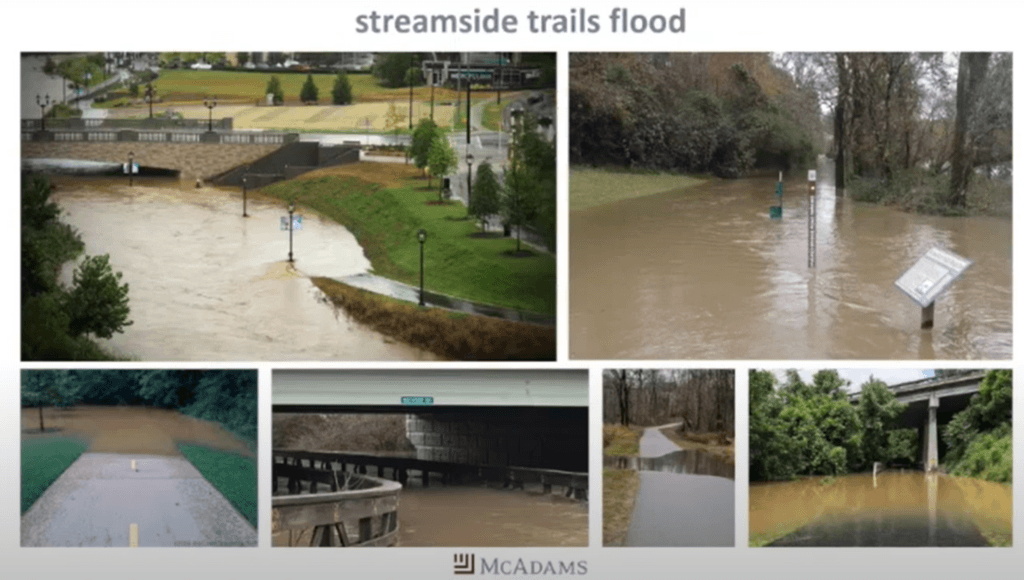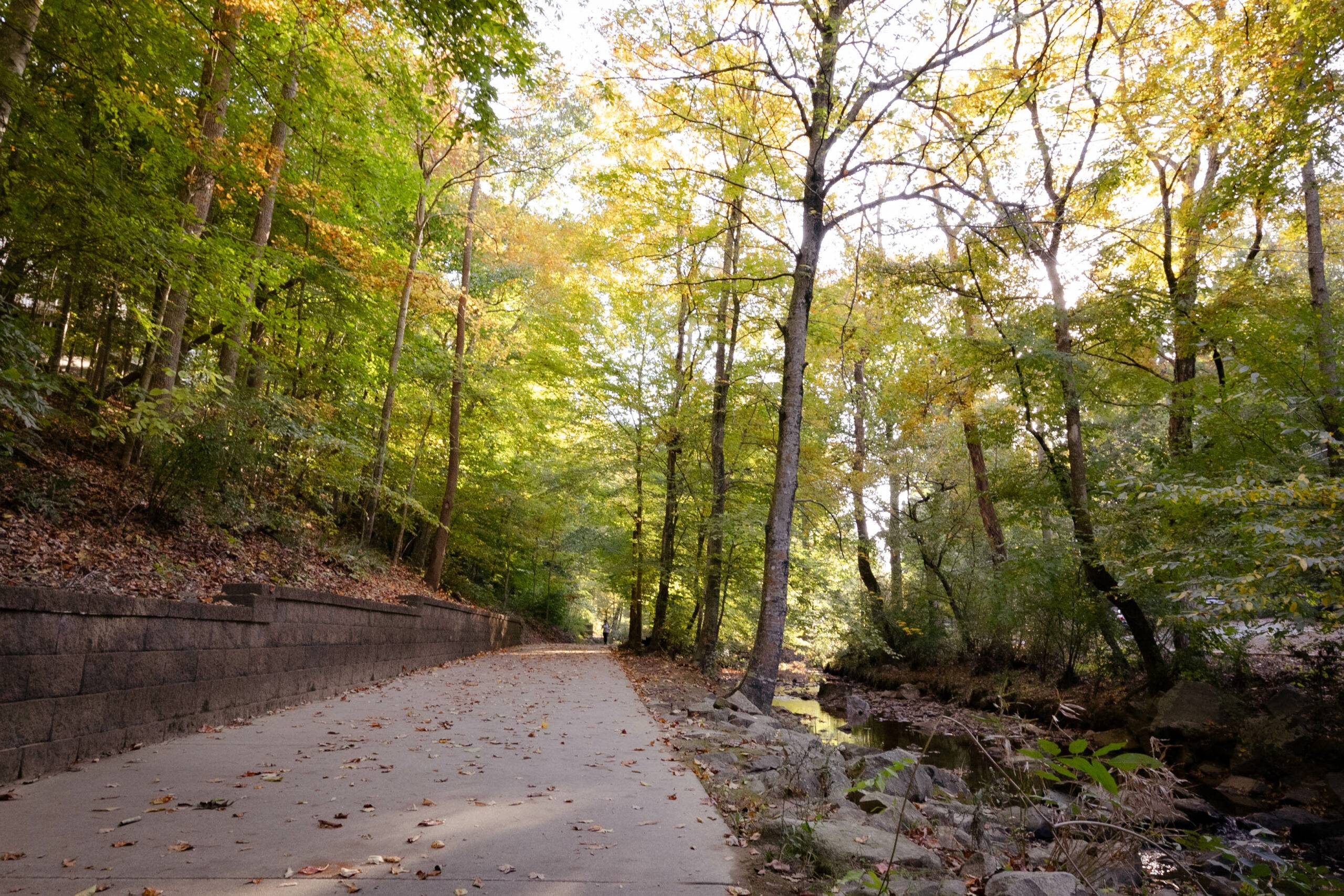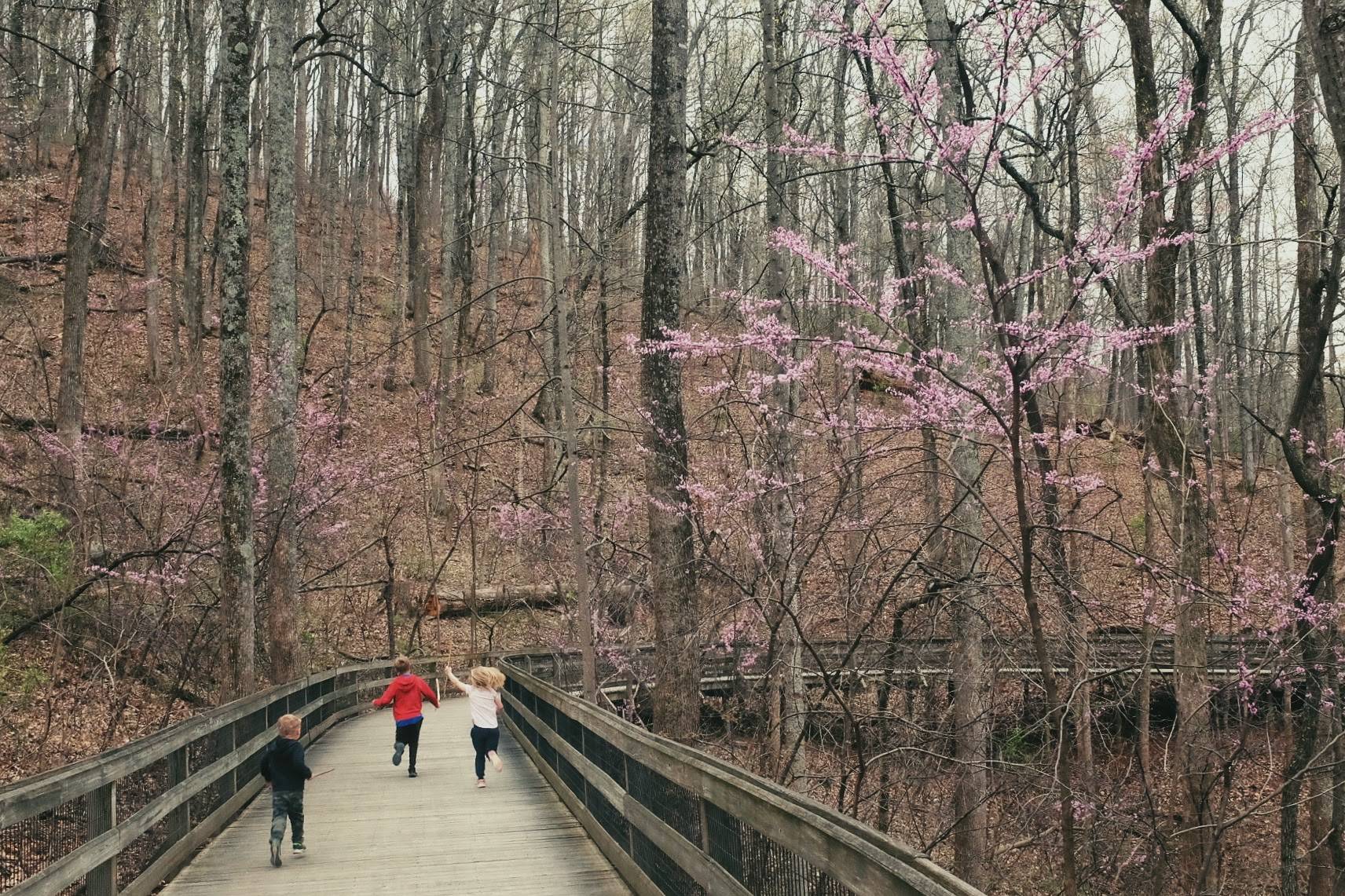This last week our family traveled to Charolottesville, Virginia, and we visited the Saunders-Monticello Trail. This greenway trail is a lot different than other greenway trails I have written about in this series, and it illustrates something very important about how greenways get designed and constructed, which is the concept of “trade-offs”. (If you’re wondering why the series is called “Greenways I Know”, it’s named after the Kids in the Hall sketch “Daves I Know”.)
The Saunders-Monticello Trail was constructed in the late 1990’s and opened in 2000. It has two trailheads off Thomas Jefferson Parkway and climbs gently for about 600’ over its two-mile length to the gate at Monticello. The greenway trail is part of the 370 acres near Monticello that are owned by the Thomas Jefferson Foundation, the same organization that owns and operates the Monticello property. The Saunders-Monticello Trail is an incredibly well engineered, ADA-compliant trail and I highly recommend you check it out if you’re up in the Charlottesville area.
The most impressive aspect of the Saunders-Monticello Trail are the boardwalks. These constructed wooden structures allow trail users to easily traverse otherwise untraversable terrain along the steep slope of Carter Mountain. It feels like you’re walking through the treetops along a mountainside and that’s because you are. My kids loved this.

One problem with wood boardwalks is the wood. Over time these boardwalks will require some expensive maintenance to repair and replace the rot that will inevitably strike. The alternative to wood boardwalks on the Saunders-Monticello Trail would have been some very costly and complicated road building into the side of a mountain, so the maintenance costs are a good trade-off in this application.
Back on the ground, the Saunders-Monticello Trail is paved with gravel throughout, and this is where we can see another trade-off with the greenway trail design.

Gravel works for the Saunders-Monticello Trail in part because it is an upland trail that doesn’t follow a stream like the Bolin Creek Greenway in Chapel Hill. Putting gravel and other natural surfaces within a stream buffer is problematic because all that gravel will wash away during storm events that flood the stream buffer.

This is why we see a concrete trail along Bolin Creek in Chapel Hill. This greenway trail is designed to flood and requires the least amount of maintenance.

As the conversation about the Bolin Creek Greenway in Carrboro moves forward, there will be discussion further down the road about surface material and pervious versus impervious surfaces. It’s good to keep in mind that there will be trade-offs in how we design and construct the greenway. (For a deep dive into this topic, have a look at this really great webinar by McAdams staff discussing greenway trial surface choice.) Trading 30’ of unmanaged impervious sewer easement for 10’ of defined impervious surface with seeded shoulders is going to be a good trade-off.

